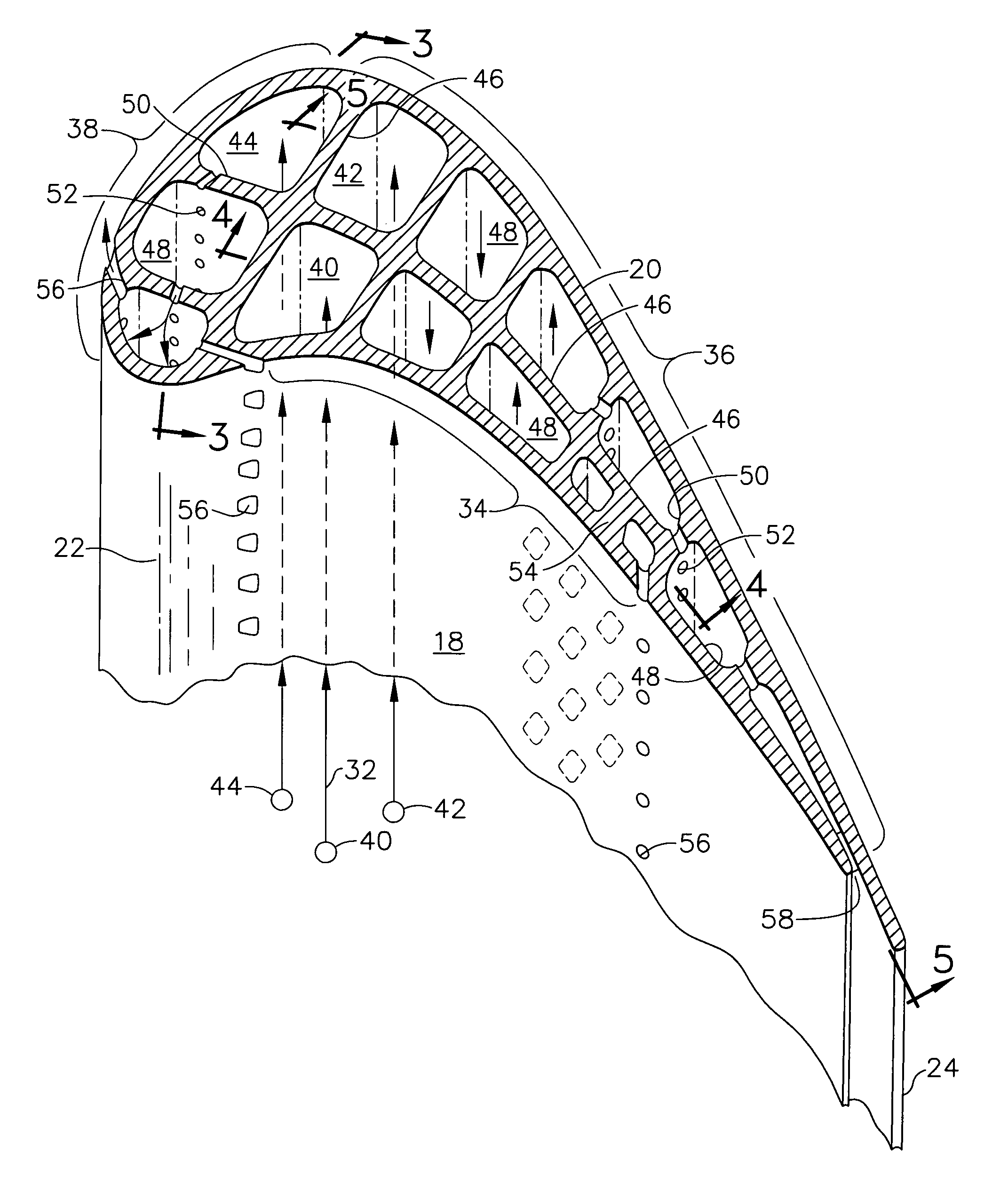Parallel serpentine cooled blade
a technology of serpentine cooled blades and parallel serpentine, which is applied in the direction of engines, machines/engines, mechanical equipment, etc., can solve the problems of inability to meet the substantially long life requirements of modern gas turbine engines, significant affecting the efficiency and performance of the entire engine, and additional centrifugal force problems, etc., to achieve the effect of improving internal cooling
- Summary
- Abstract
- Description
- Claims
- Application Information
AI Technical Summary
Benefits of technology
Problems solved by technology
Method used
Image
Examples
Embodiment Construction
[0025]Illustrated in FIG. 1 is a gas turbine rotor blade 10 for use in a conventional gas turbine engine, such as a turbofan aircraft engine (not shown). The blade itself is typically manufactured using conventional casting techniques, and includes an airfoil 12 integrally joined to a mounting dovetail 14 at a platform 16.
[0026]The airfoil includes a generally concave pressure sidewall 18, and a circumferentially opposite, generally convex suction sidewall 20 integrally joined together at chordally opposite leading and trailing edges 22,24. The airfoil also extends longitudinally or radially in span from a radially inner root 26 at the platform 16 to a radially opposite tip 28.
[0027]During operation, the blade is mounted in a supporting rotor disk (not shown) by trapping the dovetail 14 in a complementary dovetail slot. In this way, centrifugal forces generated in the blade during rotary operation are carried through the lobes or tangs of the dovetail into the supporting rotor disk....
PUM
 Login to View More
Login to View More Abstract
Description
Claims
Application Information
 Login to View More
Login to View More - R&D
- Intellectual Property
- Life Sciences
- Materials
- Tech Scout
- Unparalleled Data Quality
- Higher Quality Content
- 60% Fewer Hallucinations
Browse by: Latest US Patents, China's latest patents, Technical Efficacy Thesaurus, Application Domain, Technology Topic, Popular Technical Reports.
© 2025 PatSnap. All rights reserved.Legal|Privacy policy|Modern Slavery Act Transparency Statement|Sitemap|About US| Contact US: help@patsnap.com



